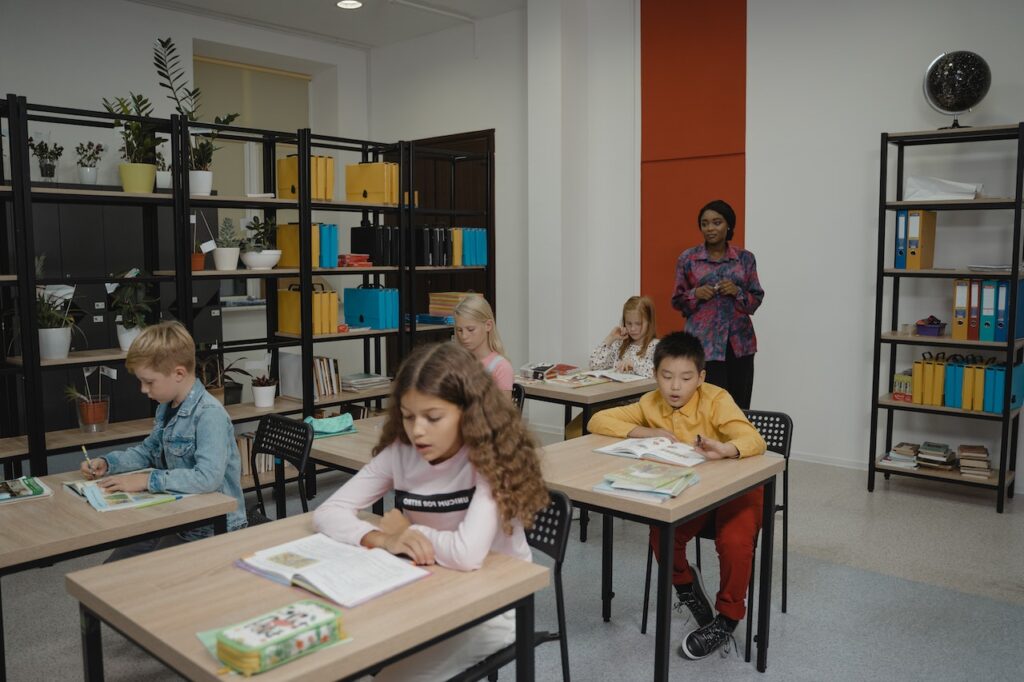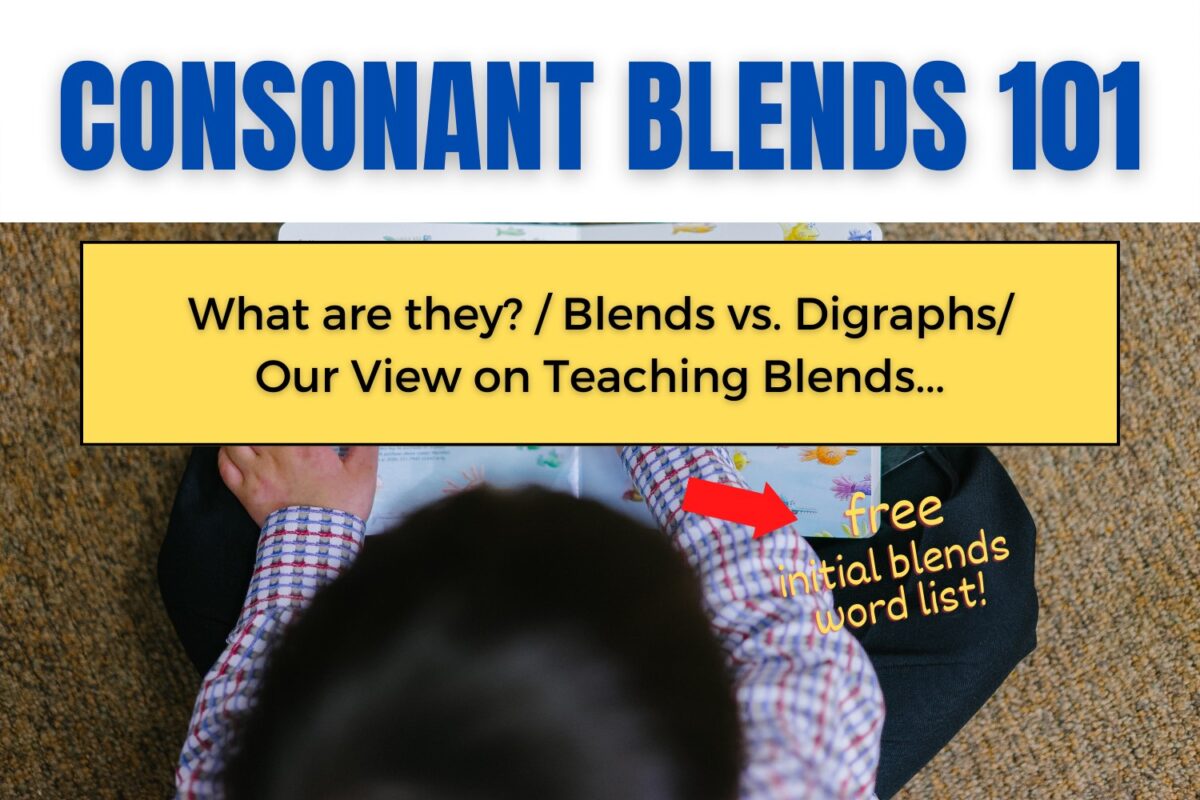For a long time I have torn on the topic of how to teach consonant blends to kids… Should we teach our children these consonant blends or not? I have researched a lot on this particular topic, and have read arguments both in favour and against teaching consonant blends. It is really difficult to make up your mind, because both arguments have a point.
However, I think I have finally made up my mind.
I will share with you what my final verdict to this question is is later on (and why!), but before I want to present the information to you so you can also reach your own conclusions. They might be different to mine. I just want to share the facts with you.
What are consonant blends?
First of all, let’s begin with some definitions to set the ground rules and make sure we properly understand the concepts. What are consonant blends (also called “consonant clusters”, by the way)?
They are actually no more than 2 consonants pronounced rapidly in a word.
For instance: brave, crisp, spade.
Say these words out loud, and listen carefully. Notice if the sound that these letters normally make changed in these words… If you have trouble finding the answer, say the words a few times!
So, what do you think? Do they make a new sound, different from their normal sound or do they not?
I guess you already have figured out the answer… But, in any case, this is it: they keep their sound.
For an initial blends words list, visit our library or Free Resources or Get it here for free!
What is the difference between consonant blends and digraphs?
The fact that the consonants that form the blend actually keep their original sound is what makes them different from digraphs.
An example of a digraph is, for instance, when the letters “c” and “h” team up to make the /ch/ sound, as in “chat”, “chase”, “cheese”, “church”, etc.
Another example of a digraph is the letter combination “s” and “h”, as in “shell”, “wish” or “she.”
In my opinion, understand the implications of this distinction is key.

How should we teach consonant blends?
Let’s recap. We’ve just seen that the letters that form the blend keep their original sounds, the only thing is that:
- The sounds are pronounced really quickly
- Their edges seem to adapt to the sounds around them so they can be pronounced continuously, in an uninterrupted stream, if you wish.
There’s more information to come, but, first, let’s stop and reflect upon this for just a little while…
Having said all of this, what do you think? Should we teach blends or not?
It looks like there could be some benefit to it, right? The sounds of letters don’t change, but they are said quickly… In a way, it seems sort of logical to think that we could create faster readers if we teach consonant blends…
However, studies have found that there’s not an increase in word reading speed when students are taught blends.

But, let’s just not stop here…
I want you to really have all the information, so you can make your own mind and make an informed decision on how to go about teaching consonant blends.
Let’s have a look at the blends that we should teach our children…
How many consonant blends are there?
Here is a list of the consonant blends that we need to teach our children:
- bl, as in blend
- br, as in bravo
- cl, as in clap
- cr, as in crisp
- dr, as in drop
- dw, as in dwell
- fl, as in flap
- fr, as is frog
- gl, as in glitter
- gr, as in grain
- pl, as in please
- pr, as in print
- sc, as in scape
- sk, as in sky
- sl, as in slide
- sm, as in smile
- sn, as in snow
- sp, as in spade
- st, as in statue
- sw, as in sweet
- tr, as in train
- tw, as in twinkle
- chr, as in Christmas
- lp, as in gulp
- ct, as in fact
- pt, as in slipt
- sk, as in ask
- lk, as in milk
- lf, as in elf
- xt, as in next
- ft, as in lift
- nd, as in hand
- mp, as in bump
- lt, as in belt
So, those are our consonant blends. 34 in total.
For an initial blends words list, visit our library or Free Resources or Get it here for free!
Bear in mind that , on top of that, we also have to teach children consonant digraphs. Remember this is when 2 consonant team up to make a new sound, rather than retaining their original sound – as we’ve learned before. The digraphs that we need to teach are:
- ch, as in chase
- voiced th, as in that
- unvoiced th, as in thin
- sh, as in shell
- ck, as in sock
- ng, as in sing
- ph, as in phone
- gh, as in laugh
- mb, as in lamb
- wh, as in when
Besides, we also have to teach the following vowel teams and diphthongs.
- ai/ay
- ee
- ey
- ie
- oa
- oe
- ue
- au
- ea
- oo
- ou/ow
- oi / oy
Should we teach consonant blends OR not, then? My view!
As you’ve just seen, there is a huge deal of things that we need to teach our children when it comes to reading instruction.
Because, apart from all the things I have previously listed, we have also have to teach our kids about short and long vowel sounds, open/closed syllables, r-controlled vowels and so much more!
So, it seems to me that adding blends to the equation can easily end up in a cognitive overload for so many children.
Why teach them when there’s another way?
In my opinion -taking into account both the fact that studies show that there is no added benefit to teaching consonant blends and the potential risk of cognitive overload in children – a more sensible approach is to spend more time practicing and mastering blending sounds in general, and on phonemic awareness (learning to hear and manipulate the individual sounds in words) rather than spending so much time teaching all of these consonant blends.
Is it possible for children to learn consonant blends if we don’t teach them specifically?
Remember that there’s really nothing special to blends. The sounds of the consonants forming the blend don’t change; they are just said faster, so they can be pronounced in a continuous stream.
Thus, it seems that a much better use of children’s time and mental resources is to focus on getting better at decoding, at sounding out words, so -once they are ready for it-, they can read more complex words containing consonant blends.
I know that it looks incredibly challenging when you think of longer words, with lots of consonants one after the other!
That’s why we need to do this process very gradually:
- We start decoding CVC words (Consonant, Vowel, Consonant) – TOP
- We follow with CCVC words (Consonant, Consonant, Vowel, Consonant) – STOP
- We then practice decoding CCVCC (Consonant, Consonant, Vowel, Consonant) words – STOMP
In other words, we get children to practice blending a lot, starting with simple structures first, rather than suddenly introducing all of these blends, even before they have fully mastered blending simple words.
And then, once we introduce these more complex CCVC and CCVCC words, we keep practicing blending… Big time!
Consonant blends and spelling
This approach will even help your child or student with his/her future spelling, because when children are taught blends explicitly:
- Many times they forget to write down letters when spelling words. For instance, they forget to write down the “l” in flip; they spell it “fit” instead.
- They write an entirely different letter. For instance, instead of the word “flip”, they could write something like this: “fhip.” This is because they have been sort of trained into thinking that these consonant combinations are something else, similar to digraphs, such us “ch”or “sh.” So they go in their memory looking for that other missing letter on the blend, when the real answer is in their ears and their ability of listening to sounds.
Conclusion
I know that teaching these blends in the traditional way is done with the best intentions, to really try to make children’s job easier, and -in a way- it sort of makes sense because these 2 sounds are pronounced so quickly!
But if you pronounce them slowly, and you train your child on phonemic awareness, the end result is that your child will be able to hear, dissect, blend and manipulate these individual sounds turning him / her into a very skilled reader and with greater potential to become a skilled speller as well.
Prefer to watch? Then, watch this video on the Learning Reading Hub Youtube channel!

Hey there! I’m Laura – an author, YouTuber, blogger, and the creator of the “Learning Reading Hub” platform. I created this space to dive into the world of reading instruction and to shout from the rooftops about how vital it is to use the right methods for teaching reading. I’ve got a TEYL certification (Teaching English to Young Learners), plus a Journalism degree from the University of Navarra in Spain, along with a Master’s Degree in Communication.
I’ve always loved digging into research, jotting down my thoughts, connecting with people, and sharing what makes me tick. With a background in marketing, digital projects, and the education scene (especially language learning), I’m all about wearing different hats.
When my first kid needed to learn how to read, it opened my eyes to the challenges and complexities involved. This journey took me through a rollercoaster of self-teaching, eye-opening discoveries, and yeah, some letdowns too. There’s so much conflicting info out there, along with methods that just don’t cut it. And let’s face it, these issues are way too common.
Now, I’m all about channeling that passion (without sounding like a know-it-all!) and sharing my journey. My mission? Making it easier for those who are on the same path I once was.
My heart’s with my family and the amazing Learning Reading Hub project. I live with my husband and two little ones, raising them in a bi-lingual environment (English and Spanish).

